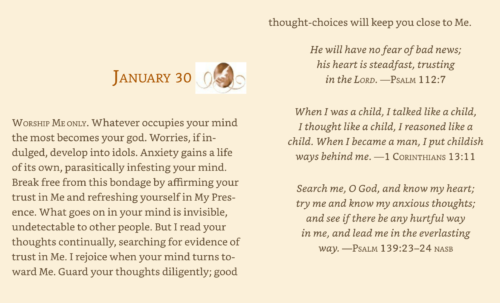The Task Within the Task
Father Richard introduces the first half of life and the necessary journey beyond it:
There is much evidence on several levels that there are at least two major tasks to human life. The first task is to build a strong “container” or identity; the second is to find the contents that the container was meant to hold. The first task we take for granted as the very purpose of life, which does not mean we do it well. The second task, I am told, is more encountered than sought; few arrive at it with much preplanning, purpose, or passion.
We are a “first-half-of-life culture,” largely concerned about surviving successfully. Probably most cultures and individuals across history have been situated in the first half of their own development up to now, because it is all they had time for. We all try to do what seems like the task that life first hands us: establishing an identity, a home, relationships, friends, community, security, and building a proper platform for our only life.
But it takes us much longer to discover “the task within the task,” as I like to call it: what we are really doing when we are doing what we are doing….
Problematically, the first task invests so much of our blood, sweat, tears, and years that we often cannot imagine there is a second task, or that anything more could be expected of us. “The old wineskins are good enough,” we say, even though according to Jesus they often cannot hold the new wine. According to him, if we do not get some new wineskins, “the wine and the wineskin will both be lost” (Luke 5:37–39). The second half of life can hold some new wine because by then there should be some strong wineskins, some tested ways of holding our lives together. But that normally means that the container itself has to stretch, die in its present form, or even replace itself with something better.
Various traditions have used many metaphors to make this differentiation clear: beginner and proficient, novices and initiated, milk and meat, letter and spirit, juniors and seniors, baptized and confirmed, apprentice and master, morning and evening, “Peter when you were young … Peter when you are old” (John 21:18). Only when we have begun to live in the second half of life can we see the difference between the two. Yet the two halves are cumulative and sequential, and both are very necessary. We cannot do a nonstop flight to the second half of life by reading lots of books about it. Grace must and will edge us forward. “God has no grandchildren. God only has children,” as some have said. Each generation has to make its own discoveries of Spirit for itself.
No pope, Bible quote, psychological technique, religious formula, book, or guru can do the journey for us. If we try to skip the first journey, we will never receive its real fruits or understand its limitations.
Moving Beyond Survival
In his talk Loving the Two Halves of Life, Richard describes the questions we focus on in the first half of life:
I first read the phrase “first half of life” in the work of Swiss psychologist Carl Jung (1875−1971) years ago. It made sense to me then, but I probably was too young at that point to recognize how true it would eventually become. In short—and this is my layperson’s interpretation of Carl Jung—he would say that the first half of life is the task that we think is our primary task. The second half of life is really the task within the task that a lot of people never get to because they’re so preoccupied with the first task, which is all about making money, getting an education, raising children, and paying a mortgage. It’s about tradition, law, structure, authority, and identity. It’s about why I’m significant, why I’m important, why I matter, why I’m good.
Most of us are so invested in these first-half-of-life tasks by the age of forty that we can’t imagine there’s anything more to life. But if we stay there, it remains all about me. How can I be important? How can I be safe? How can I be significant? How can I make money? How can I look good? And how can I die a happy death and go to heaven? Religion itself becomes an evacuation plan for the next life, as my friend and colleague Brian McLaren says, because we don’t see much happening of depth or significance in this world. It largely remains a matter of survival.
I’m sad to say, after fifty-five years as a priest, I think a lot of Christians have never moved beyond survival questions, security questions, even securing their future in eternity. First-half-of-life religion is an insurance plan to ensure that future. In this stage, any sense of being a part of a cosmos, of being part of a historical sweep, that God is doing something bigger and better and larger than simply saving individual souls (and my own soul in particular) is largely of no interest to us. I don’t think I’m exaggerating. That’s all the first half of life can do.
It’s clear that if someone wants to be elected to a political office in the United States or any country, all they need to do is assure people of safety. Bill Plotkin, who’s been such a wonderful influence on so many people in recent decades, speaks of the first half of life as our survival dance, and the second half of life as our sacred dance. [1] Most people never get beyond their survival dance. It’s just identity questions, boundary questions, superiority questions, and security questions. We would call them ego questions, but they’re not questions of the soul.
The soul moves beyond questions of security and importance because it has discovered that it is absolutely important.
